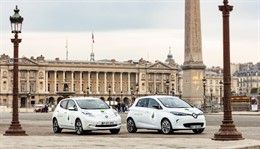

A significant milestone in the electric vehicle story was reached in 2015: more than 1 million electric vehicles and plug-in hybrids could be found on the world’s roads.
By the end of the year, that figure had reached 1.26 million - a remarkable achievement given that only ten years earlier, in 2005, electric cars were still measured in the hundreds.
Improvements in battery technology and greater investment in charging infrastructure have resulted in a substantial shift to zero-emissions motoring. Since 2010, the annual growth in sales has soared; coincidently (or maybe not) that was the year when the first Nissan LEAF was sold. Between 2010 and 2015, Nissan sold more than 200,000 LEAFs, making it the world’s best-selling EV.
Today, 80 per cent of the world’s electric vehicles are found in five main markets: the United States, China, Japan, the Netherlands and Norway.
China overtook the USA as the world’s largest EV market in 2015. According to the International Energy Agency (IEA) in its recently published report Global EV Outlook 2016, China also has the largest number of e-scooters and electric buses in the world.
So far this year, the trend remains upwards with worldwide sales of electric vehicles and plug-in hybrids continuing to rise – the first four months of 2016 saw a sales increase of 42 per cent over the same period in 2015.
According to the world sales database for electric vehicles, EV-volumes.com, around 180,500 BEVs and PHEVs were sold until the end of April 2016, with the biggest growth markets being China, where sales doubled year-on-year, and Japan, which posted a 36 per cent rise in sales.
While sales are still rising, the International Energy Agency has issued a note of caution in a recent report: “Industry, governments and early adopters have succeeded in demonstrating that electric cars can deliver the practicality, sustainability, safety and affordability characteristics expected from them, but the EV market still requires policy support to achieve widespread adoption and deployment.
“Battery costs have been cut by a factor four since 2008 and are set to decrease further. In parallel, battery energy density needs to increase to enable longer ranges for lower prices. Technological progress and economies of scale are critical to move towards cost parity with conventional internal combustion engines. Recent announcements suggesting EV ranges that will soon be exceeding 300kms give encouraging signals.”
The message? The future is electric.
